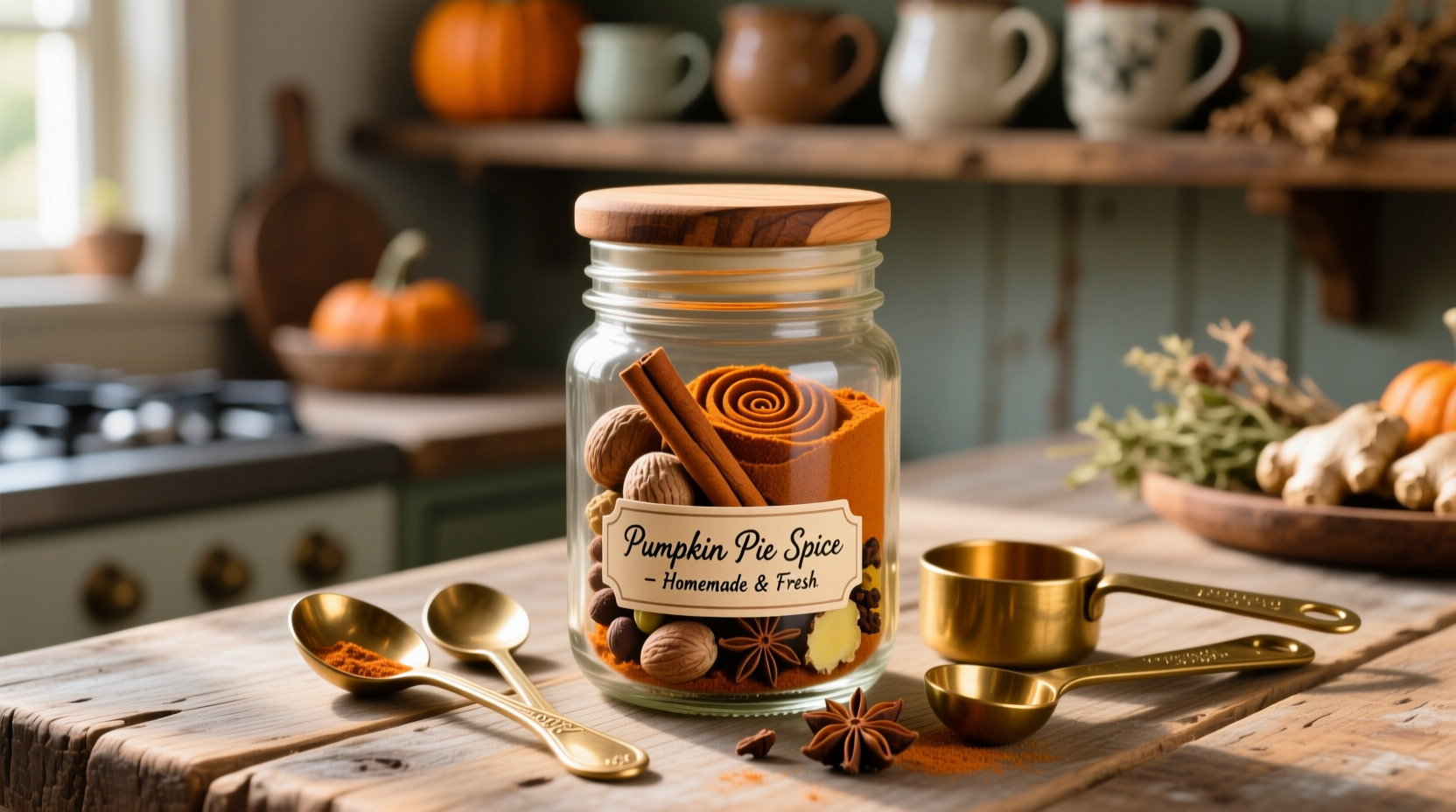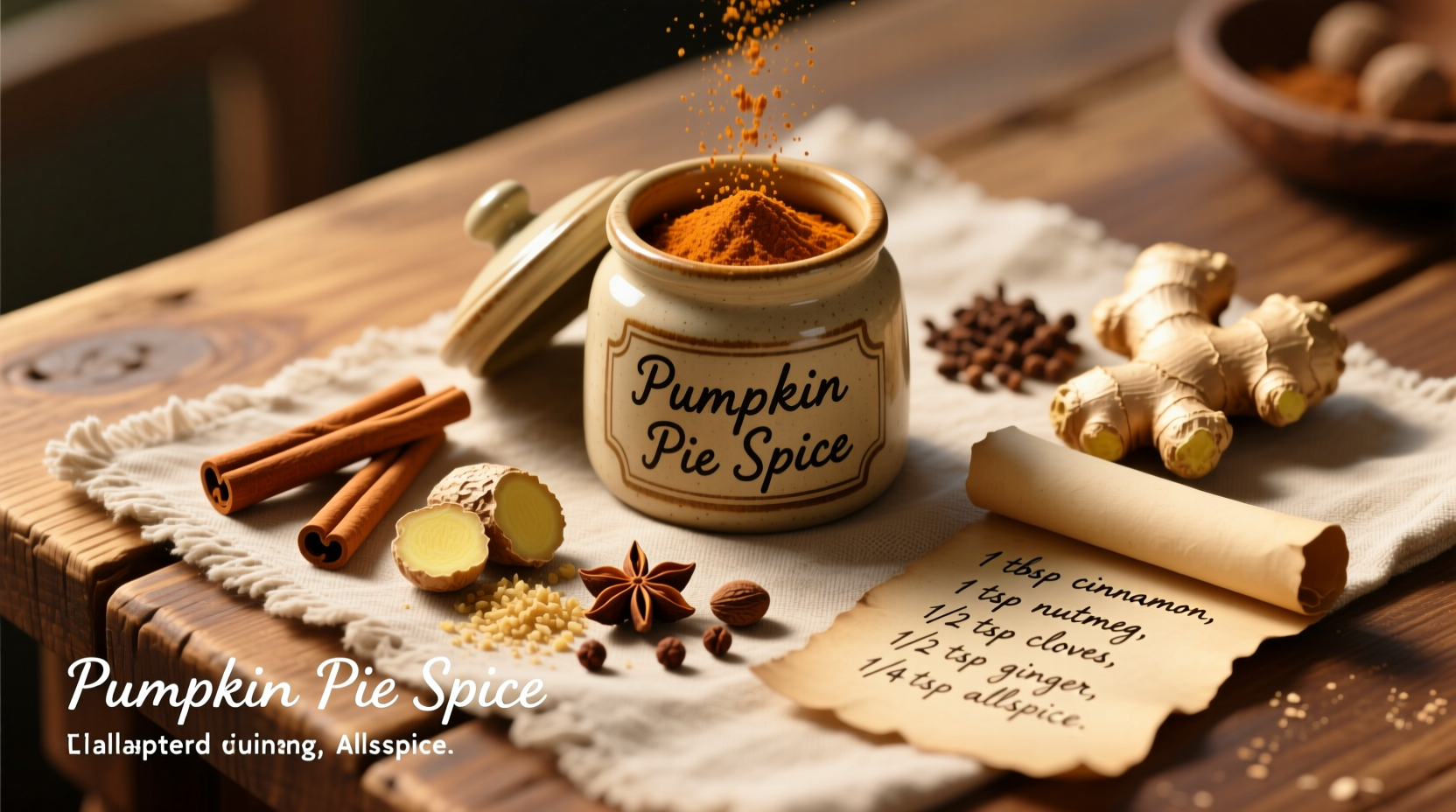Here's the exact recipe for homemade pumpkin pie spice: Combine 3 tablespoons ground cinnamon, 2 teaspoons ground ginger, 2 teaspoons ground nutmeg, 1 teaspoon ground allspice, and 1/2 teaspoon ground cloves. Mix thoroughly in an airtight container. This makes approximately 1/4 cup, perfect for one standard pumpkin pie recipe.
Nothing captures the essence of autumn quite like the warm, comforting aroma of pumpkin pie spice. While store-bought versions are convenient, crafting your own blend unlocks superior flavor complexity and freshness that transforms your fall baking from ordinary to extraordinary. This comprehensive guide reveals everything you need to create the perfect homemade pumpkin pie spice blend, with precise measurements, professional techniques, and practical applications that go far beyond just pie.
Why Homemade Pumpkin Pie Spice Beats Store-Bought Every Time
Commercial pumpkin pie spice often contains anti-caking agents and may use older spices that have lost their volatile oils—the compounds responsible for vibrant flavor and aroma. When you make your own blend, you control the freshness and quality of each component. Professional chefs like Antonio Rodriguez emphasize that "freshly mixed spice blends release 40% more aromatic compounds than pre-mixed versions", creating a noticeably richer flavor profile in your baked goods.
| Spice Component | Traditional Ratio | Modern Variation | Flavor Impact |
|---|---|---|---|
| Cinnamon | 75% | 65-80% | Warm base note, sweet-spicy foundation |
| Ginger | 20% | 15-25% | Bright, zesty warmth with slight heat |
| Nutmeg | 10% | 8-12% | Earthy, nutty complexity |
| Allspice | 3.5% | 2-5% | Subtle clove-cinnamon-nutmeg fusion |
| Cloves | 1.5% | 0.5-2% | Intense aromatic punch, use sparingly |
The Perfect Pumpkin Pie Spice Recipe: Step-by-Step
Follow these professional techniques to create a balanced spice blend that elevates all your fall recipes:
- Gather your spices: Use high-quality ground spices (check expiration dates—spices lose potency after 6-12 months)
- Measure precisely: 3 tablespoons cinnamon, 2 teaspoons ginger, 2 teaspoons nutmeg, 1 teaspoon allspice, 1/2 teaspoon cloves
- Dry toast (optional but recommended): Place each spice in a dry skillet over medium-low heat for 30-60 seconds until fragrant
- Cool completely: Allow toasted spices to cool for 5 minutes before mixing
- Combine thoroughly: Whisk all spices together in a small bowl
- Store properly: Transfer to an airtight container away from light and heat

Historical Evolution of Pumpkin Pie Spice
Understanding the timeline of pumpkin pie spice reveals why certain proportions became standard. Originally, colonial Americans didn't have a specific "pumpkin pie spice"—they adapted European spice traditions to New World ingredients:
- 1600s: Early colonists used whatever warming spices they had available—often just ginger and nutmeg
- 1700s: Cinnamon became more accessible, forming the base of emerging blends
- 1800s: Allspice and cloves were incorporated as global trade expanded
- 1930s: Commercial spice companies standardized the blend we recognize today
- Present: Modern variations accommodate dietary preferences while maintaining core flavor profile
This historical context, documented by culinary historians at the University of Michigan's Spice Trade Archives, explains why certain spices dominate the blend—cinnamon's affordability and availability made it the logical foundation.
Storage Science: Maximizing Freshness and Flavor
Proper storage dramatically affects your spice blend's shelf life. According to food safety research from the National Center for Home Food Preservation, ground spices stored in airtight containers away from light maintain optimal flavor for 6 months. Beyond this point, volatile oils degrade, reducing aromatic intensity by up to 70%.
Storage best practices:
- Use dark glass or opaque containers (light degrades spice compounds)
- Store in a cool, dry place (not above the stove where heat fluctuates)
- Label with preparation date
- Never store in the refrigerator (moisture causes clumping)
Practical Applications Beyond Pumpkin Pie
Your homemade blend shines in numerous recipes:
- Oatmeal enhancement: Stir 1/2 teaspoon into cooking oats
- Coffee booster: Add a pinch to your morning brew
- Roasted vegetables: Toss squash or sweet potatoes with 1 teaspoon blend before roasting
- Homemade granola: Incorporate 1 tablespoon per 3 cups oats
- Spiced whipped cream: Mix 1/4 teaspoon into heavy cream before whipping
Customizing Your Blend: Popular Variations
Adapt the traditional recipe to suit different preferences:
- Milder version: Reduce cloves to 1/4 teaspoon and add 1/2 teaspoon cardamom
- Extra-warm version: Add 1/4 teaspoon black pepper for subtle heat complexity
- Sugar-free option: Omit any added sugar sometimes found in commercial blends
- Whole-spice alternative: Use freshly grated nutmeg and whole cloves ground just before mixing
Troubleshooting Common Issues
Fix these frequent pumpkin pie spice problems:
- Too bitter: You've likely used too much cloves or allspice—add 1/2 teaspoon more cinnamon to balance
- Flavor too weak: Spices may be old—replace individual components before remaking blend
- Clumping: Moisture has entered container—sift blend and add 1/4 teaspoon rice grains to absorb humidity
- Overpowering: Next time reduce total quantity by 25%—you can always add more during baking











 浙公网安备
33010002000092号
浙公网安备
33010002000092号 浙B2-20120091-4
浙B2-20120091-4